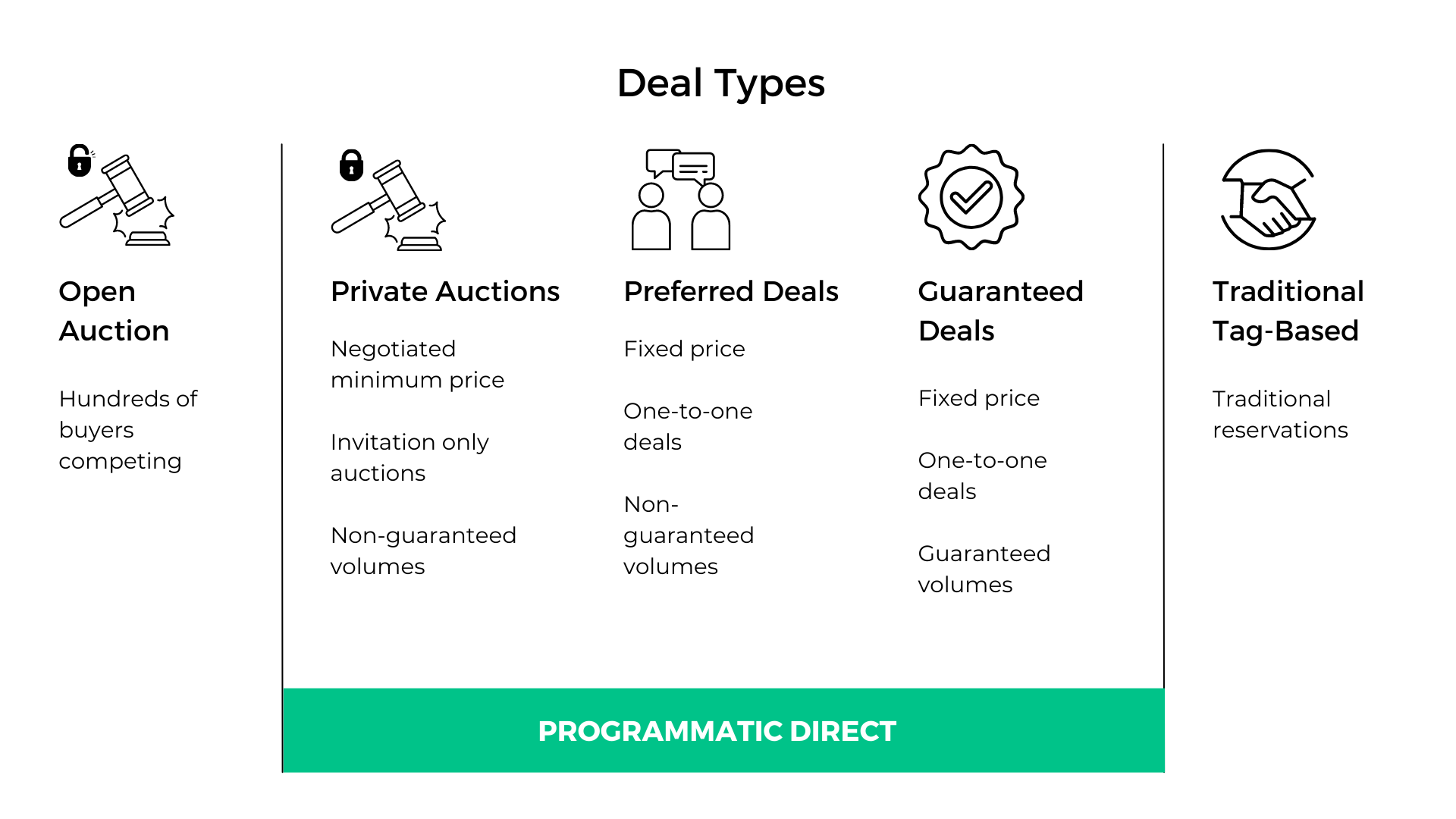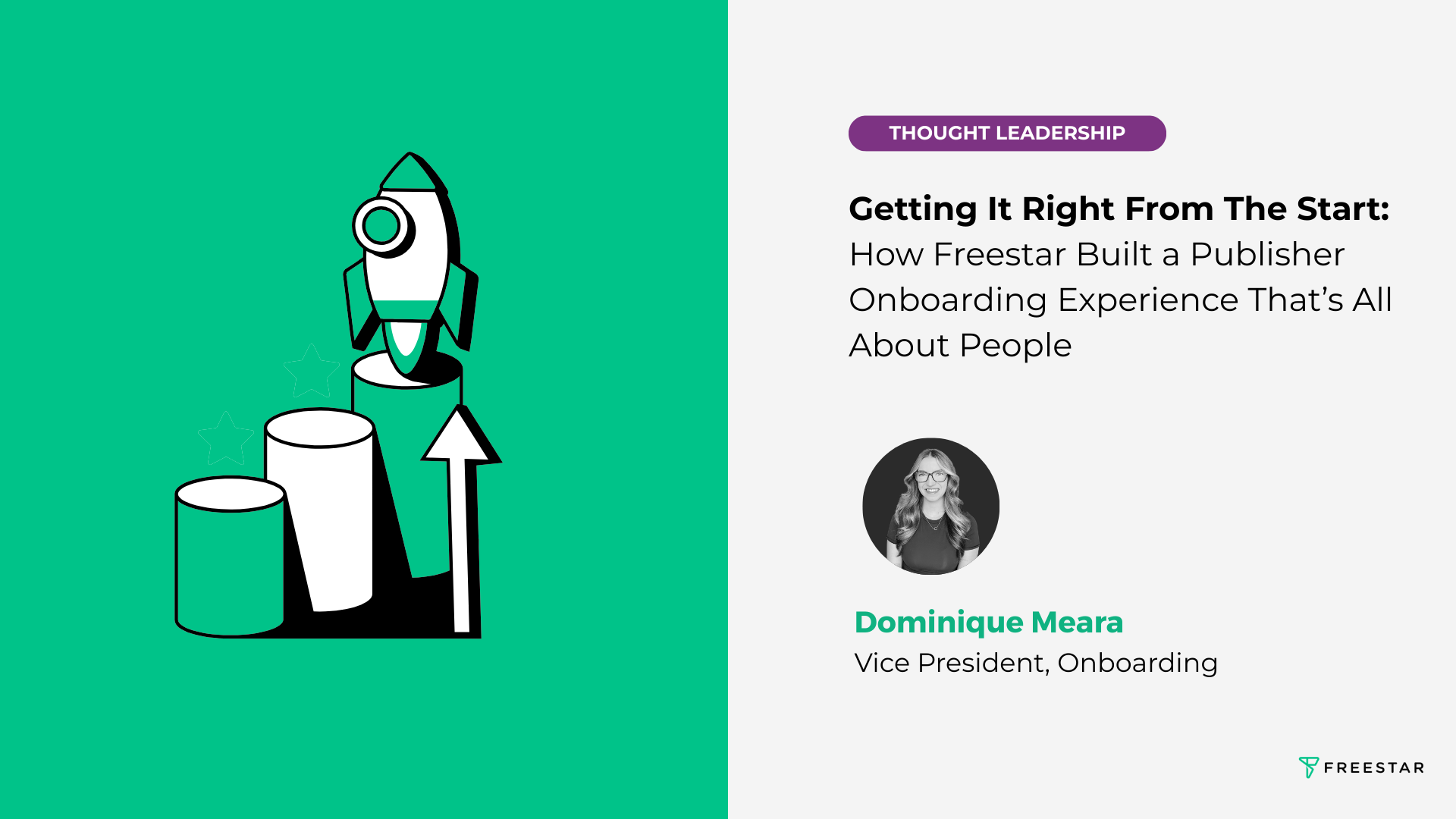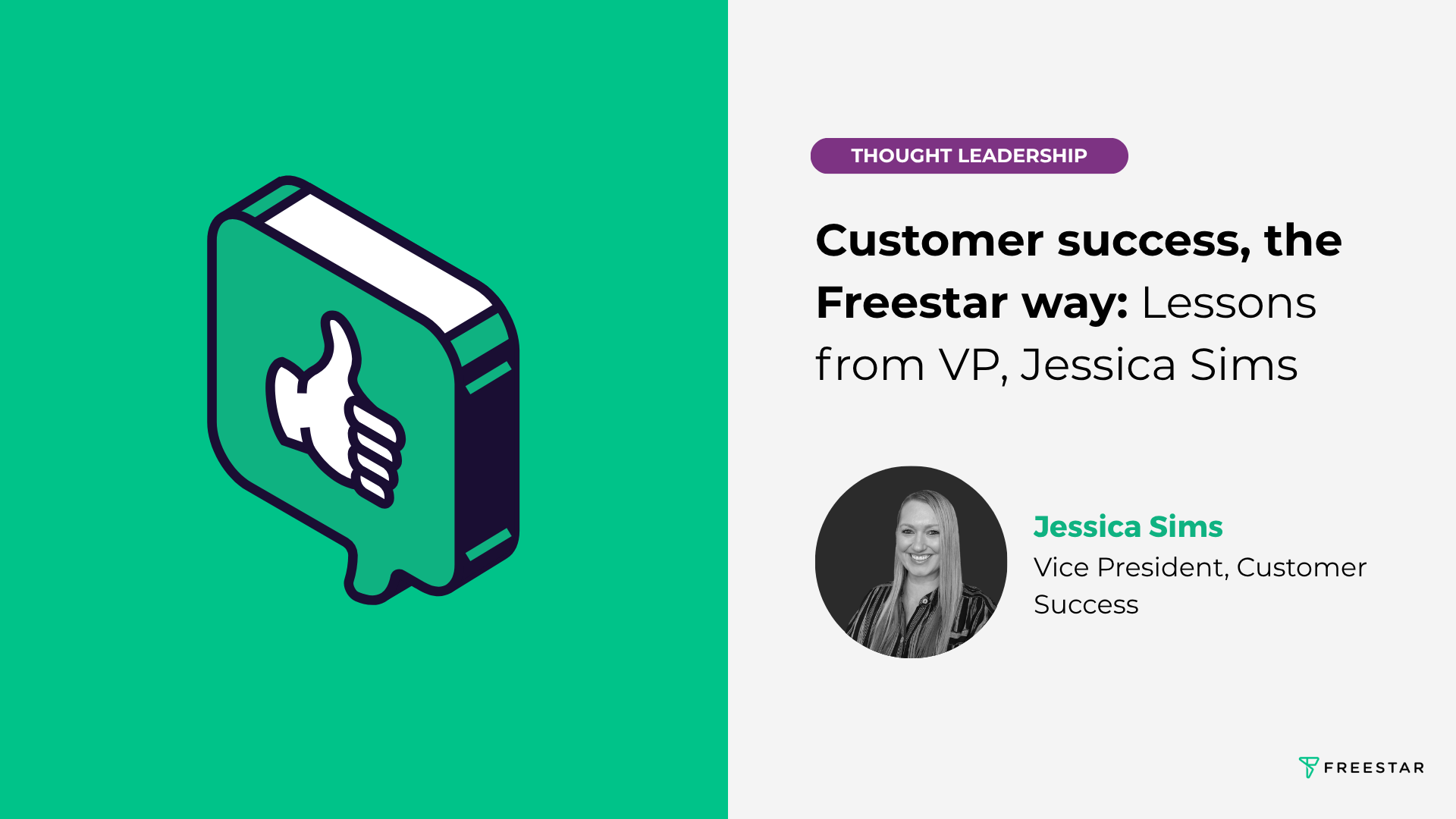Programmatic direct deals are a type of digital advertising in which a buyer and a seller agree to sell and purchase ad inventory directly from each other, without the need for an intermediary such as an ad exchange.
In programmatic direct deals, the buyer and seller agree on the specific terms of the ad campaign, such as the ad placement, the audience targeting, the duration of the campaign, and the pricing model.. The buyer then uses a programmatic channel to access the seller’s ad inventory and reserve the ad space for their campaign.
Direct deals give buyers more control and certainty over where their ads will appear and who they will reach so they’re willing to increase the CPM. Deals can run across all ad units, including high-value placements, such as homepage takeovers, interstitial and post-transaction ads.
To understand all that direct advertising has to offer, we’ll go through:
- Benefits to Programmatic Direct
- Types of Programmatic Direct
- 7 Tips for to Optimize for Direct Deals
Benefits to Programmatic Direct
Direct Deals allow publishers to outwardly market valuable audience segments while also giving buyers transparency and confidence in their ad purchase. Additional publisher benefits include:
- Improved Revenue – Direct campaigns generate above average CPMs and increase publisher revenue by grouping valuable traffic and giving buyers confidence in their purchase. Publishers that incorporate direct ad sales earn a higher eCPM than other publishers who rely solely on bids from the open-market.
- Brand Control – Publishers gain control over their ad inventory, allowing them to choose which brands show and how specific audiences are targeted based on interests and demographics. Sitelayouts with multiple ad slots can optimize exposure for advertisers and avoid competing messages. This model is seen as the future of digital advertising, with many established publishers adopting direct deals, and publishers can make changes to their inventory at any time.
- Build Relationships with Advertisers – Publishers can build direct relationships with buyers. Direct channels grow trust and increase the deal value by aligning site traffic with brand specific KPIs. Publishers who build lasting relationships with relevant brands see strong, long-term success with programmatic direct deals.
Types of Programmatic Direct
Freestar connects our publishers to all types of direct deal campaigns, handling the beginning to end process including negotiating contract and RFPs to reporting on campaign data in our dashboard. We also provide guidance for campaigns managed by publishers.
Freestar supports all the deal types:
- Private Auctions (also known as Private Marketplace (PMP), Private Exchange) – A private auction gives a select number of advertisers access to an inventory segment at a set CPM price. Campaigns compete at price-priority, winning and filling when they’re the highest bid. Buyers are not obligated to have a spend minimum.
- Preferred Deals (also known as Programmatic Non-Guranteed) – A preferred deal is a one-to-one negotiation between a publisher and advertiser wherein they agree on a price and terms for inventory. Preferred Deals give advertisers preferential access by inventory because bids are prioritized over open-market. Similar to Private Auctions, advertisers in Preferred Deals are not required to have a spend minimum.
- Guaranteed Deals (also known as Guranteed Buy, Programmatic Guaranteed) – A programmatic guaranteed deal is like a preferred deal where the publisher and advertiser negotiate price and terms, but the purchase of inventory is guaranteed. Publishers get a guaranteed stream of revenue while advertisers get access to reserved, premium inventory.

7 Tips for Publishers to Optimize for Programmatic Direct Deals
If you’re a publisher looking to access more direct deals, there are a few tips to improve your website to appeal to Programmatic Direct adveritsers:
- Improve Viewability – Having a site or Ad unit viewability over 70% improves how buyers view your inventory and unlocks better paying deals. You can improve viewability through:
- Ad Placement – It important to have ad that can be viewed, incorporated with the content. There’s different ad layout strategies you can implement to see what works best for your website.
- Lazy Loading – With lazy loading, ads that are not likely to be seen are not loaded, resulting in fewer unviewed impressions being served which improves your viewability.
- Sticky Units – ticky units like sticky footer, adhesion, pushdown and sidewalls, are great for viewability because they remain 100% visible to users for the entire time they’re on the page, which translates to incredibly high viewability.
- Anchor Ads – As anchor units allow ads to be on the user’s page for the entire duration of their site visit, your viewability values increase when enabled.
- Utilize Post-Checkout Ads – Websites that have users complete a transaction can enable ads on post-check out pages such as order history, account history and/or order confirmation. A simple 300×250 can see upwords of $20 CPMs for this type of inventory due to the high customer intent.
- Enable High-Impact Ad Units – A great way to maximize CPM is by using high-impact ad units such as:
- Interstitials – The interstitial is a type of ad that will show up after a user clicks on any link on the website. Interstitial is 100% effective for viewability and compared to display, interstitial has 8-10x CPMs.
- Video – It’s been known that video ads tend to perform better than static ads, specifically 2-4x CPMs compared to display ad.
- Opt into Deal Only Categories – Another way to optimize your website for direct deals is opening your website to categories such as pharmaceuticals, politics, cannabis, gambling, and alcohol. Activity will vary between site to site but there are deals available in these category that provide high CPMs. Ask your CSM for the Direct Deal survey if not completed before.
- Use Freestar’s GAM – When publishers use Freestar’s GAM, they get access to our Sales team who sell on your behalf. This makes direct deals much easier for publishers to access. If they’re not using our GAM, publishers don’t have the opportunity to take advantage of our exclusive campaigns.
- Utilize Email Monetization – Do you have a customer newsletter? If so, consider selling inventory on your newsletter. Email newsletters appeal to advertisers because the customer intent is there and advertisers know that the customers has a level of trust with the publisher. Customers are more likely to trust and engage with ads based on where they’ve been seen. The CPMs for this kind of inventory can vary based on publisher and user list but thhe more niche, the better CPMs.
- Prioritize Recurring Users – It’s important to focus creating content that promotes reoccurring users. This type of user is highly valuable to advertisers because of the intent and trust they have with a website.
Conclusion
As publishers aim to boost eCPM and advertisers seek to improve brand safety, programmatic direct deals are becoming more popular. They’re a great way to increase revenue, impact brand guidelines, and build lasting relationships with buyers.
Whether it’s a Private Auction, a Preferred Deal, or a Guaranteed campaign, each allows publishers to market their unique audience and improving buyer transparency to create high CPM channels.
However you choose to run your programmatic ad stack, you can always work with Freestar to handle your RTB ad management as well as programmatic direct deals. To get started with programmatic direct, complete this survey and our team will get in touch with you.





